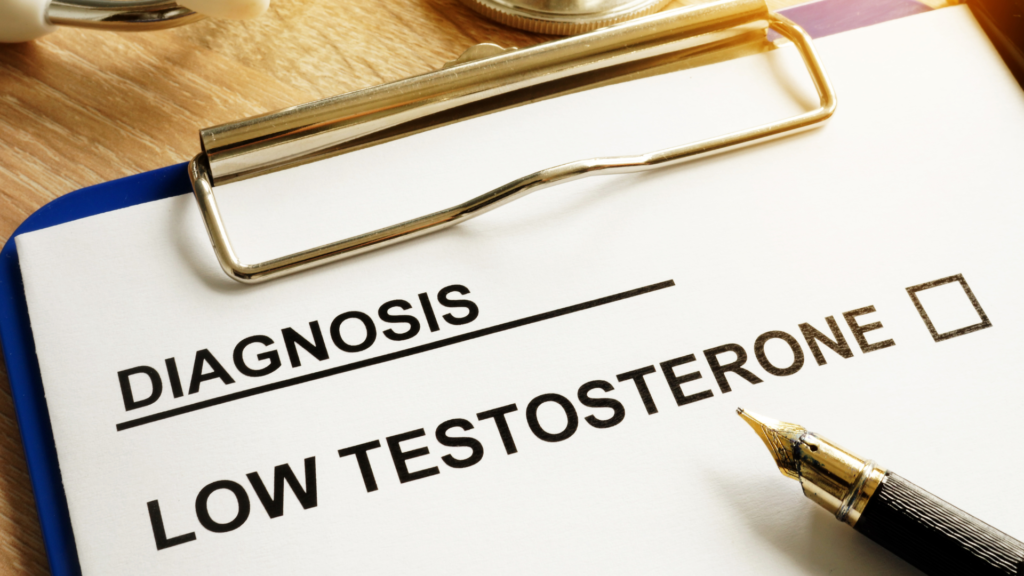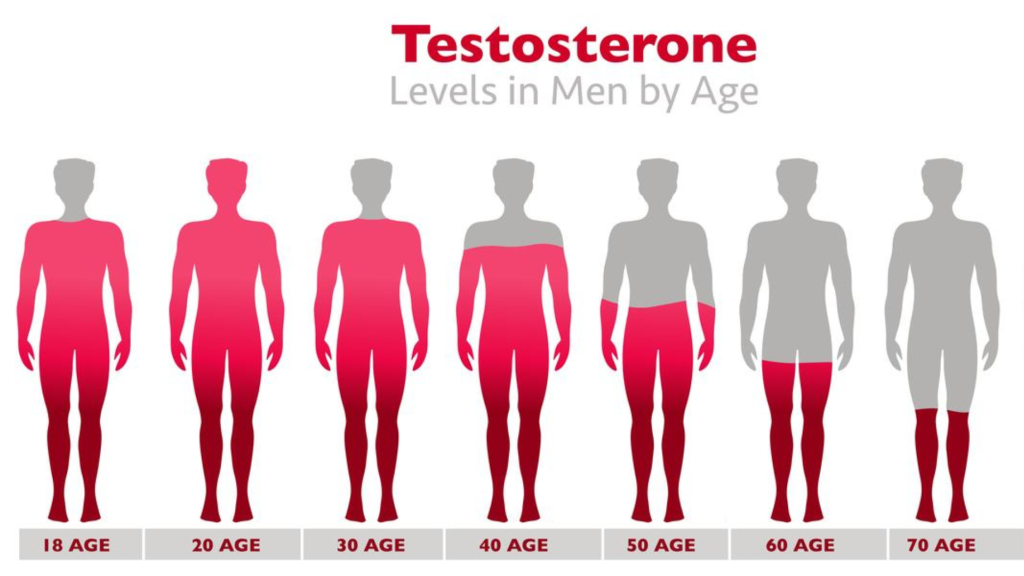Symptoms Of Low Testosterone
Do you think you might be suffering from low testosterone? If so, you’re not alone. Low testosterone, also known as hypogonadism, is a common condition that can have a significant impact on men’s physical and mental health. In this blog, we’ll delve into the world of testosterone and explore the symptoms of low testosterone, often referred to as “low T.” Understanding these signs is crucial because they can easily be overlooked or attributed to other causes, leaving individuals to suffer silently. Whether you’re curious about your own health or concerned for a loved one, join us as we shed light on the telltale signs that signal a testosterone deficiency and discover the steps to regain vitality and well-being.
What is male hypogonadism?

Male hypogonadism is a condition in which the body does not produce enough testosterone, the main male sex hormone. It is also sometimes referred to as androgen deficiency or testosterone deficiency. The role of testosterone in male hypogonadism is to produce and maintain the male characteristics such as facial hair, a deep voice, and muscle mass. Without enough testosterone, these characteristics cannot be maintained.
What is the role of testosterone in male hypogonadism?
Testosterone is the main male sex hormone and is responsible for many of the physical characteristics of males. It is also responsible for the production of sperm and is critical for sexual function. Testosterone is produced in the testes and is regulated by the hypothalamus and pituitary gland. In male hypogonadism, the body does not produce enough testosterone to maintain these characteristics and functions. Low levels of testosterone can lead to a variety of symptoms including decreased muscle mass and strength, decreased libido, erectile dysfunction, and infertility.
Male hypogonadism is a serious condition that can have a major impact on a man’s quality of life. Fortunately, there are treatments available to help men with this condition. Treatment usually involves hormone replacement therapy, which can help to restore normal testosterone levels and improve symptoms. It is important to talk to your doctor if you think you may have male hypogonadism so that you can get the treatment you need.
What is a low testosterone level?
estosterone is a hormone produced in the body that plays an important role in male reproductive health. It is responsible for the development of male characteristics such as facial hair, muscle mass, and a deep voice. Low testosterone, or low-T, is the medical term for when a man has a lower than normal level of testosterone in his body.
What is considered a low testosterone level?
A low testosterone level is typically defined as a level below 300 nanograms per deciliter (ng/dL). Men with a level below this are considered to have a low testosterone level.
What are the health risks of having a low testosterone level?
Having a low testosterone level can have a number of negative health effects. These can include a decrease in muscle mass, an increase in body fat, a decrease in energy levels, a decrease in sex drive, depression, and a decrease in overall quality of life. Low testosterone can also lead to an increased risk of osteoporosis, heart disease, and stroke. In addition, low testosterone can lead to an increased risk of infertility in men.
It is important to note that low testosterone levels are not always a cause for concern. Some men may have a naturally lower testosterone level, and this is not necessarily a sign of an underlying health condition. It is important to speak to a doctor if you are concerned about your testosterone levels.
What are the Symptoms of Low Testosterone?

Low Testosterone, or hypogonadism, is a condition that affects men significantly as they age, but it can also occur at any stage of a man’s life due to various reasons. This condition can manifest through many signs and symptoms. The following are some of the most common symptoms associated with low levels of testosterone.
Physical Changes
Perhaps the most visual symptoms of low testosterone are the changes in physical traits. Muscle mass starts to decrease, leading to increased body fat. This is usually most noticeable around the waistline. Another physical change that may occur is a diminished bone density. This may turn into osteoporosis over time if not addressed properly. In addition, men with low levels of testosterone have reported height loss. Besides, other physical changes can include hair loss and hot flashes, similar to hot flashes experienced by women in menopause.
Sexual Function
Sexual dysfunction is a common symptom of low testosterone. Men with low testosterone might experience a decrease in sexual desire, fewer spontaneous erections, and, in some cases, infertility. A decrease in sperm production can also lead to troubles conceiving a child. There could also be other sexual issues like reduced sexual activity, erectile dysfunction, and smaller testicle size.
Sleep Disturbances
Another common symptom is sleep disturbances. Men with low testosterone often find themselves having insomnia or waking up frequently during the night. These sleep disturbances can have a significant impact on your quality of life, leading to daytime fatigue and feeling exhausted, even after a full night’s rest.
Emotional Changes
Men with low levels of testosterone have reported changes in their emotional wellbeing. This includes increase in levels of anxiety, depression, irritability, and a lack of motivation or focus. These symptoms can be prevalent and disruptive, affecting professional and personal relationships. You may also exhibit lowered self-confidence and a sense of indifference or sadness.
Cognitive Function
Low testosterone may also affect cognitive functions. It may cause issues with memory, problem-solving ability, and concentration. According to some studies, there is a connection between low testosterone levels and conditions like Alzheimer’s disease.
Fatigue and Reduced Activity
If you have low testosterone, you might feel tired all the time, regardless of how much sleep you get. Decreased energy levels are a significant side effect that leads to reduced physical activity. As a result, individuals with low testosterone levels may find it harder to engage in activities that they once enjoyed.
Causes of Low Testosterone
Testosterone is an important hormone for men, as it helps to regulate a number of bodily functions, including muscle mass, bone density, and sex drive. Low testosterone levels can lead to a number of health issues, including fatigue, depression, and decreased libido.
So, what are the common causes of low testosterone? While there are a number of potential causes, the most common are aging, certain medical conditions, and lifestyle choices.
Aging is the most common cause of low testosterone in men. As men age, their testosterone levels naturally decrease, and this can lead to a number of symptoms, including fatigue, decreased libido, and depression.
Certain medical conditions can also lead to low testosterone levels. These include conditions such as diabetes, obesity, kidney disease, and HIV/AIDS. In addition, some medications, such as steroids, can also lead to low testosterone levels.
Treatments for Low Testosterone
Low testosterone levels can be treated with a variety of approaches. Depending on the cause of the low testosterone, the treatment may include lifestyle changes, medications, or hormone replacement therapy.
Lifestyle Changes
Making lifestyle changes can help to improve testosterone levels. These changes include getting regular exercise, eating a healthy diet, and reducing stress. Exercise can help to increase testosterone levels, as can eating foods that are rich in zinc, such as oysters, beef, and pumpkin seeds. Reducing stress can also help to improve testosterone levels.
Medications
In some cases, medications can be used to treat low testosterone levels. These medications may include clomiphene, anastrozole, or human chorionic gonadotropin (hCG). These medications can help to stimulate the production of testosterone in the body.
Testosterone Replacement Therapy
Testosterone replacement therapy (TRT) is a treatment option for men with low testosterone levels. TRT involves taking testosterone in a variety of forms, including patches, gels, injections, and pellets. TRT can help to improve symptoms of low testosterone, such as decreased sex drive, fatigue, and depression.
Risks and Benefits of Testosterone Replacement Therapy
TRT is generally safe, but there are some potential risks and side effects. These include an increased risk of blood clots, prostate enlargement, and an increased risk of prostate cancer. However, the benefits of TRT may outweigh the risks, as it can help to improve symptoms of low testosterone and improve quality of life.
Overall, there are a variety of treatments available for men with low testosterone levels. Lifestyle changes, medications, and testosterone replacement therapy are all potential options. It is important to discuss the risks and benefits of each treatment option with your doctor before deciding which one is right for you.
